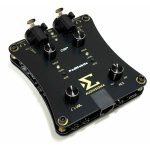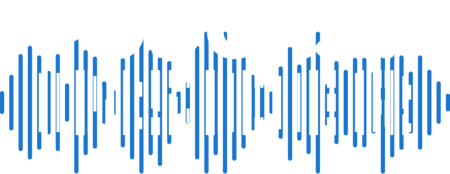Podcast: Play in new window | Download (Duration: 51:24 — 47.1MB) | Embed

In today’s episode, we take a look at the world of podcasting gear! Covering equipment and podcast setups for those just starting out or those looking to upgrade. Mike and Todd talk about microphones, mixers, and video setups to help you achieve great audio (and video) quality without breaking the bank. Plus, at the end of this episode Mike chats with Fernando Pires, the inventor of Audiosigma products, about some exciting innovations in podcasting tech!
Today’s Hosts: Mike Dell and Todd Cochrane, featuring an interview with guest, Fernando Pires
Podcasting gear can be expensive or cheap; your choice depends on how you plan to record your audio (or video). It’s much easier to get high-quality audio today than it was back in the day.
Microphones
The first and most important thing you need as a podcaster is a microphone. Today, there are many options to consider. Here is a list of microphones and approximate cost (lowest to highest) that we recommend:
- Samson Q2U / Audio Technica ATR 2100 USB/XLR: $50-80
- Can use USB or XLR
- RØDE PodMic USB: $199
- Can use USB or XLR
- Shure MV7+ USB/XLR: $275
- Can use USB or XLR
- Electrovoice RE320 XLR only: $299
- Requires an XLR mixer or interface
- Heil PR40 XLR only: $349
- Requires an XLR mixer or interface
- Shure SM7B XLR only: $399
- Requires an XLR mixer or interface
- Requires a decent pre-amp
- Electrovoice RE20 XLR only: $450
- Requires an XLR mixer or interface
- Requires a decent pre-amp
We emphasize not using condenser mics unless you have a professional recording environment. One suggestion to start with, do not use a condenser mic unless you really know what you are doing and have the right recording environment (quiet and soundproofed). And remember, friends don’t let friends podcast with a blue yeti.
Mixers and Interfaces
You can get a USB interface for XLR mics. Just beware that some of the mics listed require quite a bit of pre-amp to drive them. If you are going to record with more than one person in the room or via zoom or something like that, you will want a bit more than just a USB interface.
Choosing the right interface or mixer depends on how many people are involved and your setup.
- Focusrite Solo – 1 Microphone XLR to USB
- Focusrite also makes 2 mic interfaces and more
- Good for simple use of XLR mics on the computer with USB
- Does not work well with high powered mics without an additional pre-amp like the Cloudlifter or Fethead
- Mackie (or other) analog mixers
- You will need an Analog to USB adaptor to work with a computer
VERY flexible with mixing in different sources - A lot of wires!
- A bit of a learning curve but still an excellent option for some users
- You will need an Analog to USB adaptor to work with a computer
- Rodecaster – all three models. Rodcaster Pro, Rodcaster Pro II and Rodcaster Duo
- Full mixer board plus onboard recorder, cart rack, USB interface and more
- Much simpler to operate
- Amps are good enough for all mics. No need for an external pre-amp
- Zoom PodTrak P4
- Very portable
- Simple to use
- Up to 4 XLR mics
- Built-in recorder
- MikeHero DSP by AudioSigma
- Simple, VERY high quality sound for 1 mic
- USB interface
- Works with iPhone, iPad, or computer (likely Android too)
- Great pre-amp
- PodMoble DSP by AudioSigma
- Simple, VERY high quality sound for 2 mics
- Able to string more together if you need more mics at your location
- USB interface
- Works with iPhone, iPad, or computer (likely Android too)
- Great pre-amp
Mike’s conversation with Fernando Pires, the inventor of AudioSigma products, dives into his approach to creating simple yet powerful audio solutions for podcasters. Stick around for this insightful discussion at the end of the episode.
Video Options for Podcasters:
Like audio, video setups can be simple or elaborate.
- USB Webcams and Older Camcorders with USB out are budget-friendly options.
- Software options include OBS, VMix, Restream, and Zoom.
- Todd shares his own video setup and explains why he’ll be changing it in the future.
- Rode Streamer and the brand new Rodecaster Video mixer are top recommendations for video production.
- Resources Mentioned:
- Samson Q2U / Audio Technica ATR 2100 USB/XLR
- Focusrite Solo USB Interface
- Rodecaster Pro (Pro, Pro II, Duo)
- AudioSigma MikeHero DSP and PodMoble DSP
- OBS, VMix, Zoom, Restream, Rumble Studio
Fernando Pires – Founder of Audiosigma
Got a subject you would like us to cover on the show, Drop an email to mike@blubrry.com (audio, text, video), and we may use it. You can also post a question on the Blubrry Podcasting Facebook group.
The best place for support with any Blubrry product or service is our ticket system. Tickets give the whole team access vs. direct emails or calls. General podcasting discussions and more can be shared on the Blubrry Podcasting Facebook group.
Fill out our listener survey at surveys.blubrry.com/podcastinsider
Hosting customers can schedule a one-on-one call with Todd or a tech checkup with Mike at todd@blubrry.com and mike@blubrry.com
Stay tuned for more episodes and visit our website for the latest updates and resources.





